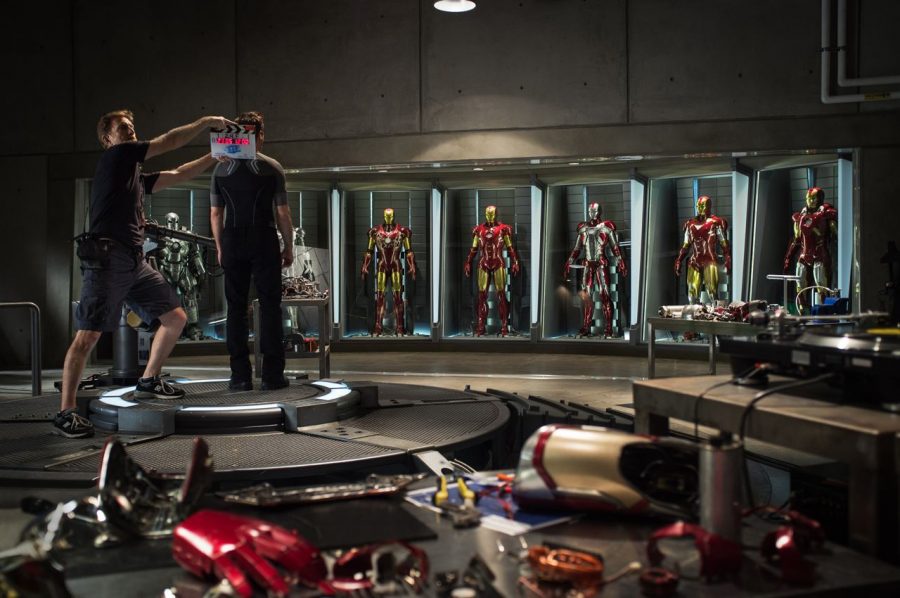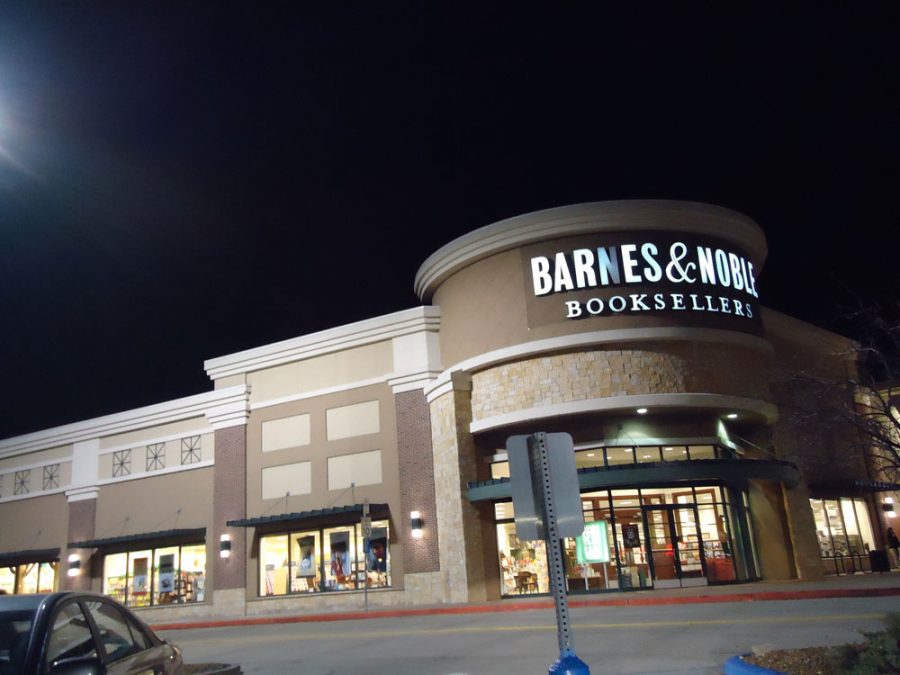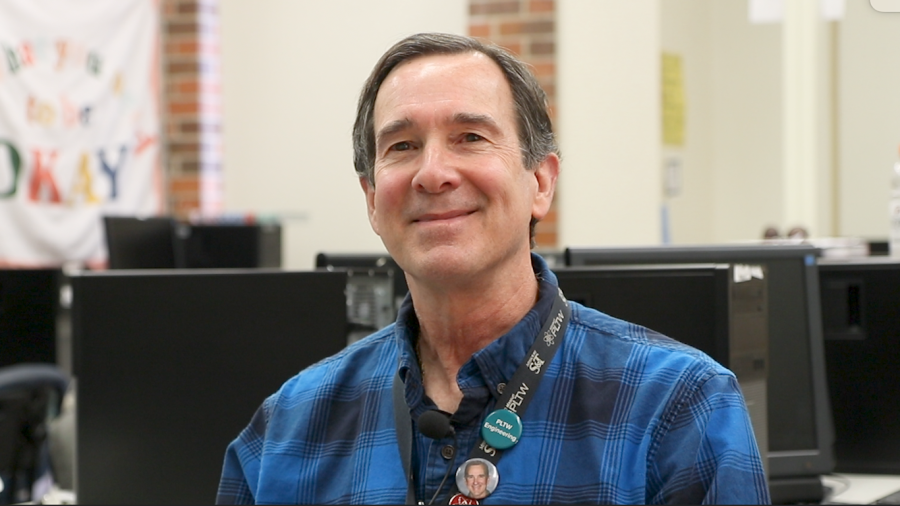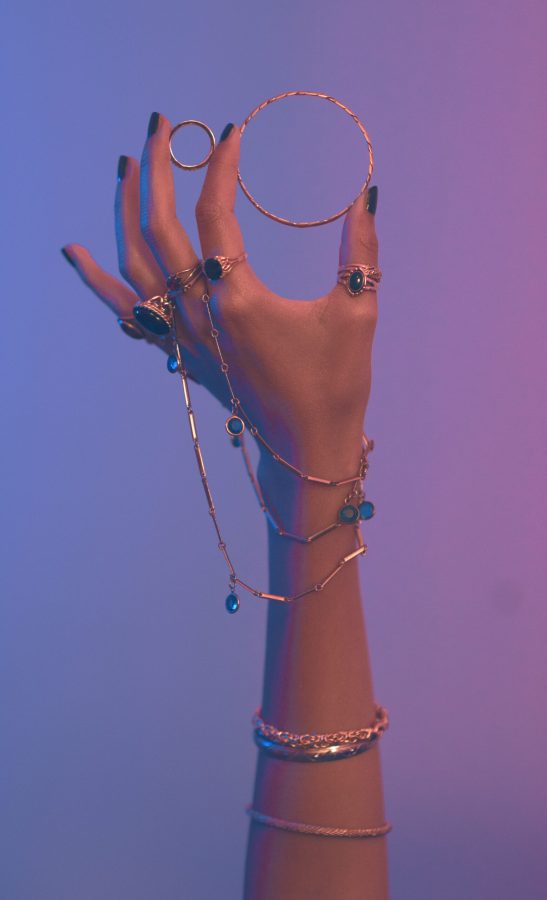On the heels of Iron Man 3‘s new trailer, two hours ago on Sunday, March 10, the New York Times reported, Marvel comics would make “more than 700 of its No. 1 issues — the first issues of various comic book lines — available free through a redesigned app.” Marvel made the announcement at the South by Southwest festival and is offering the promotion through Tuesday, March 12 at midnight CST.
Students and local comic book fans discuss their fascination with all things super just as the new trailer for Marvel’s “Earth’s Mightiest Show.”
[heading style=”2″]It’s Your Friendly Neighborhood Superhero![/heading]
“In a world where you can’t fight back, superheroes provide meaningful wish fulfillment,” Amy Farrah Fowler states on CBS’s “The Big Bang Theory,” a television show about nerdy physicists, who on this particular episode, were headed to a comic book convention, s6e13.
With such a simple statement, she wraps up that the main reason why people like superheroes and think so highly of the characters is because they prove that there is always hope in troubled times.
Dustin Duff, a sophomore, takes a spin on the concept, explaining that superheroes offer hope as well as a role model.
“Superheroes just, like sort of, a goal to become like that sort of individual that puts others before themself and is always like, fighting for the common good,” Duff said.
Where to find comic books in Columbia, Mo.
[heading style=”2″]Oh, My Stars and Garters[/heading]

Take Captain America for example, who came out in 1941. At the tail end of the great depression, America was confident that they would not have any reason to enter the war; It was so far away. Then, on Dec. 7, 1941, the Japanese bombed Pearl Harbor. The people needed a hero when their world was awry. Captain America was the perfect candidate.
Having starred in his first self-titled comic book earlier that year, Captain America became hugely popular on the homefront of World War II. Those reading of Captain America’s adventures could imagine him protecting their fathers, brothers, uncles and friends who were overseas at war.
He was clothed head to toe in red, white and blue, and battled the Axis powers weekly, often slapping Hitler himself. But he wasn’t the only patriotic World War II era hero.
While males over 18 were drafted, many jobs back on the homefront were vacated, opening a window for the women to take a job. A window which had not been opened to them before. More empowered female figures were allowed to exist, and so came Wonder Woman. Red, white and blue, gilded and strong, first appearing in December of 1941, she showed up just when she was needed.
[heading style=”2″]Holy Feminism, Batman![/heading]
Women had always stayed at home, worked in the kitchen and taken care of the children, but with American men entering the war, there was no one else to work their factory jobs and make equipment needed at war. So now that women could earn money for their families, they had a new way of seeing themselves. A new empowerment. A new hero.
But the men weren’t gone forever, and soon they returned from war, expecting their wife home with a meal on the table. Women had the right to vote, but were still viewed as only housewives. Wonder Woman may have showed their power, but many of the men still weren’t getting it. And over time female characters began to appear more and more often. However, they tended to exhibit more “passive powers,” powers which did not allow them to do battle directly, but from closer to the sidelines, rather than “active powers” with physical attacks to strike their opponent.
“A lot of the early female superheroes have powers or abilities that can absolutely be read as misogynistic,” John Doerflinger, an employee of Rock Bottom Comics downtown said. “I mean, Jean Grey was the original female X-Man and hers was the only power that was passive. Everyone else had very active abilities to just spring into battle with.”
Created in 1963, Jean Grey of the X-Men was a step back from the powerful Wonder Woman. While she was intelligent and a valuable member of the team, her telekinesis was the only power that wasn’t hands-on, not to mention she was in a committed relationship with another X-Man, seemingly unable to be on her own. Cyclops had energy beams, Angel flew into battle, Iceman could control and generate ice, and Beast was, well he was a beast.
The males of the team could leap into battle, powers at the ready, or use their fists to fight, while Jean could just stand to the side and send other objects into battle for her telepathically. Not to mention she hardly wore anything…
“Women are always dressed like, really sexed up, like they always look really really provocative, which is disgusting,” said sophomore Madeline Kuligowski. ”I feel like women should be allowed to be superheroes no matter what they look like.”
Even Wonder Woman’s costume shrank into what we know today. In her first issue, as opposed to the lingerie-esque outfit we all know today, Wonder Woman wore her signature bustier with a full skirt.
“When it comes to illustrations, I feel like they’ve gotten more and more and more provocative,” senior Ian Meyer said, “especially as people are getting more comfortable with more liberal kinds of material in comics.”
The era in which female superheroes were released molded them. When Wonder Woman was created, it was an age of opportunity for women, allowing her to be just as strong as Superman. But things reverted slightly, and the females in comics books became less tough, and less clothed. Jean was a telepath, allowing her to be in battle remotely and the Invisible Woman was never actually seen fighting. It was a weak period for female heroes.
“You can evolve them as much as you want, but the Invisible Woman was still invented in the fifties…so you can make her as independent and empowered as you want, but originally, that’s how they conceived her, so that’s what we’re stuck with now,” Doerflinger said.
[heading style=”2″]It’s a Bird! It’s a Plane! It’s in Theatres this Summer![/heading]
In 2000, director Bryan Singer’s film X-Men, a 156.2 million dollar box office success, entered theaters to begin its series and spark a new era of superhero films. Superhero movies in the 20th century began with John English and William Witney’s film “Adventures of Captain Marvel” in 1941, as a television movie serial with multiple popular television shows following.
Because both films and comic books have been around since the 1930s, the characters created have become world known. So as new superhero movies flow into theatres of the 21st century one after the other, new viewers are interested, and the adults who remember the older television shows and comics go for a long-awaited reunion with their childhood.

“It [superhero movies] rekindles the passions that people have when they were kids,” said Michael McGinty,“So for the adults that go see those films, I think they remember the old Marvel comics and so I think there’s a like a nostalgia about their past, that they find cool.”
Reasons for Favorite Superheroes
New viewers don’t go to the movies to regain remembrance of the comics, but rather because they are interested in the influx of high quality films in the theaters. Or, maybe like Natalie Wigger sophomore said, they finally have a chance to connect with the superhuman characters that they couldn’t when they were younger.
“I think it’s really cool, cause like, I never grew up with the superheroes at all, like, in any aspect of my life, and so I didn’t really know anything about them … but now I get to see them!” Wigger said.
[heading style=”2″]Geniuses, Billionaires, Playboys, Philanthropists, Assemble![/heading]
And there’s something in superheroes that appeals to nearly every demographic. For example, Senior Justin Smith cites his favorite sub-genre of Marvel as being the Marvel Zombies series, while Sophomore Margie Crosby is a die-hard Captain America fan.
With a range from zombies to super soldiers, there’s a variety of characters to choose from that are alike. For instance, if DC Universe’s Batman is too dark for you, then there’s also a series in which the original Robin, Dick Grayson is Batman. But there being so many different incarnations and versions of each character for over fifty years, there will be repeats.
In the recent Avengers film, Tony Stark says without his Iron Man suit, he is a ‘genius, billionaire, playboy, philanthropist’. That sounds a bit familiar. Bruce Wayne is also a genius, a billionaire, and a philanthropist, though playboy may be a bit of a stretch.
The characters are both orphans, who had multi-billion dollar businesses left to them by their dead parent[s], and no true superpowers to speak of. Batman trains, builds his body and uses Lucius Fox’s gadgets as an aide, just as Iron Man studies, builds his suits and uses his team as an aide.
Not to mention they both have unlimited bank accounts with which to fund their heroic escapades, and plenty of angst surrounding their parents’ deaths. Sometimes something works so well that it has to be redone.
“We’re talking about a serialized set of stories um that have been in the works or on-going since the 50s…” Doerflinger said, “if you look back at folklore or um any given mythology across the globe, you’re going to find similar characters…those are the characters that we as readers gravitate towards…that’s the story that’s being told, that’s the narrative.”
Tony Stark’s teammate Bruce Banner, better known as the Hulk, was a scientist supervising the test of a gamma radiation bomb, when he ran into the test field and stepped in the way of detonation, creating the Hyde to his Jekyll, the Hulk.
Sounds a bit like Barry Allen, or The Flash, who was a dedicated forensic scientist working in his office when his bookshelf was struck by lightning, and he was caught in the crossfire, giving him his characteristic super-speed. Not to mention both of their mothers were murdered when they were young, deciding their life paths.
The mad scientist framework is one that works very well. They were workaholics who were so engrossed that they didn’t notice the magnificent power lurking just around the corner, ready to strike.
It’s an idea which Doerflinger also points out, “It’s the same reason that you can turn on the TV on a Tuesday night and find at least five shows about teenage vampires,” the idea sells.
Iron Man and the Hulk both also happen to be founding members of the Avengers. Batman and the Flash are both founding members of the Justice League. Two of the most popular superhero teams have characters with very similar back stories.
Strange coincidence, or marketing ploy? Either way, the dynamic is perfect. Most characters will have duplicates, but this way there’s a large selection of a favorite foundation to explore.
[heading style=”2″]In Brightest Day, In Blackest Night…[/heading]
Superhero characters are not simply relatable, but motivational. They have mottoes they live by which greatly inspire their viewers. Marvel’s Spider Man uses what is perhaps the most popular motto of them all, “With great power comes great responsibility.”
Subsequently, DC Universe’s Batman lives by a strict no killing policy because of his own parents’ untimely death to violence. The characters begin to become the reader’s role model because of their display of their virtues and morals.
As Duff said, everyone wants to be the person who puts others before themselves. Superheroes are strong-willed and courageous, model citizens and good people. They’re easy to look up to, and created to be role models.
Captain America was a scrawny artist who wanted so badly to serve his country that he took part in an experiment which gave him powers to use for the benefit of the United States of America.
Wonder Woman was an Amazonian who came to the human world and sought to spread the peace that she did not see in it.
The X-Men use their natural powers to protect a world that always feared, thus hated them.
They all fight the forces of evil because they believe in what they’re doing deep in their heart. It’s not for fame, it’s not for glory, but for the principal of the thing.
People go to see a movie of their favorite hero because it is what they’ve always wanted to see come alive in front of them, not to mention it inspires new powers to follow the lead of their heroes. Similarities in heroes come out of a love for the framework. There’s pity in orphans and strength in powerless crime fighting. People can relate to heroes, while still looking up to them.
It’s an example to follow, and a hope to hold on to.
“In a world where you can’t fight back, superheroes provide meaningful wish fulfillment.”
When you feel like you can’t control anything, superheroes give the hope that maybe someone can.
[WpProQuiz 1]















































































